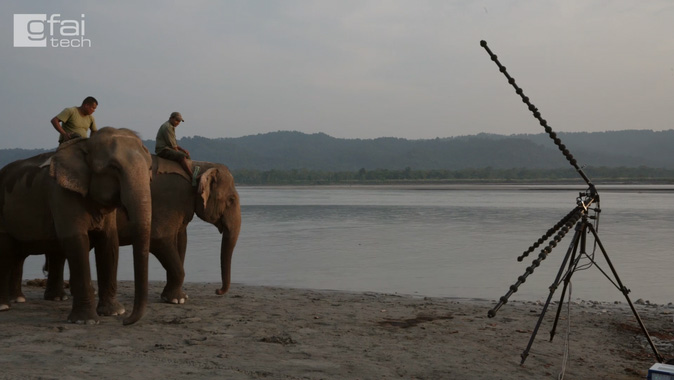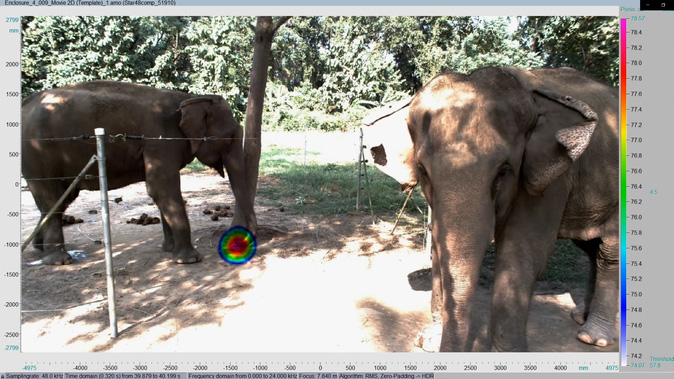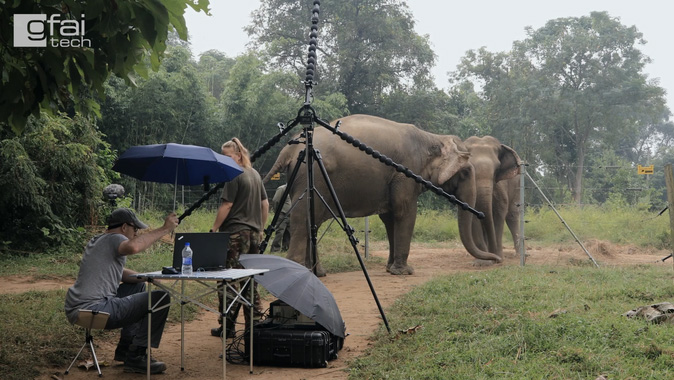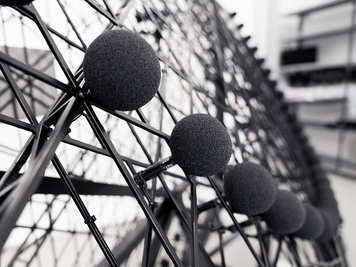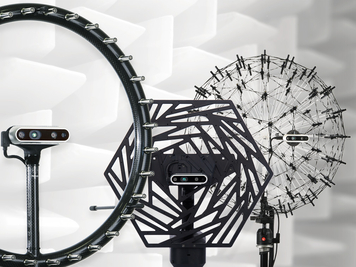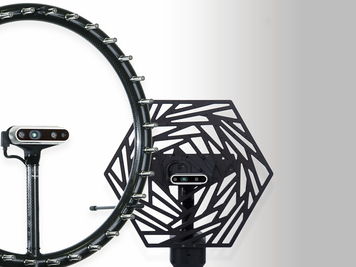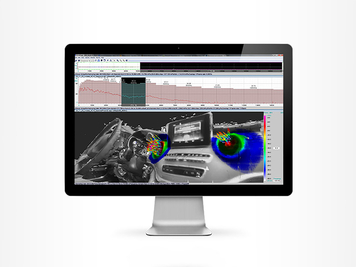In 2013, one of our engineers and Angela Stöger-Horwarth travelled to Africa to carry out free-field measurements with the Acoustic Camera. These measurements served the research question, whether elephants produce the infrasounds in their mouth or in their trunk. During the measurements in the game enclosure an intensive exchange of communication sounds took place, which the Acoustic Camera visualized in Acoustic Maps. Therefore, the Acoustic Camera was able to prove itself as a suitable tool for free-field measurements in scientific applications. The Star Array is particularly suitable for measurements over long distances. In addition, the mobile power supply enabled measurements to be taken at any location, independent of the power grid. Another major advantage over the microphones used in the lab is that the tones of the elephants can be precisely identified even in the presence of ambient noise. The result clearly showed that the sounds are actually generated in the mouth.
Five years later we supported the "Mammal Communication Lab" again in autumn 2018. Together with Veronika Beeck, our engineers travelled to Nepal. As part of her doctoral thesis at the University of Vienna, the biologist is focusing on the functional relevance of vocal learning in elephants. The general idea on the "function of vocal learning" is that different vocalizations are an indicator of group membership and social ties. In the Tiger Tops Elephant Camp of the Chitwan National Park, exciting measurements could be conducted on this topic. In cooperation with the organisation Elephant Aid International, Tiger Tops aims at providing elephants with the most natural environment possible in game enclosures. For this reason, the camp was an excellent measurement environment.
For the acoustic measurements two befriended elephants were separated in the camp. In order to find each other again in case of a separation, members of a group produce special vocalizations of sound. The generated sound could be recorded with the Acoustic Camera and visualized in Acoustic Movies for further investigations. The researcher was very enthusiastic about the measurement results as they brought her one step closer to understanding elephant language. You can see an inspiring short film about our journey to the elephants in Nepal in the video. This includes also the results of the measurements.

